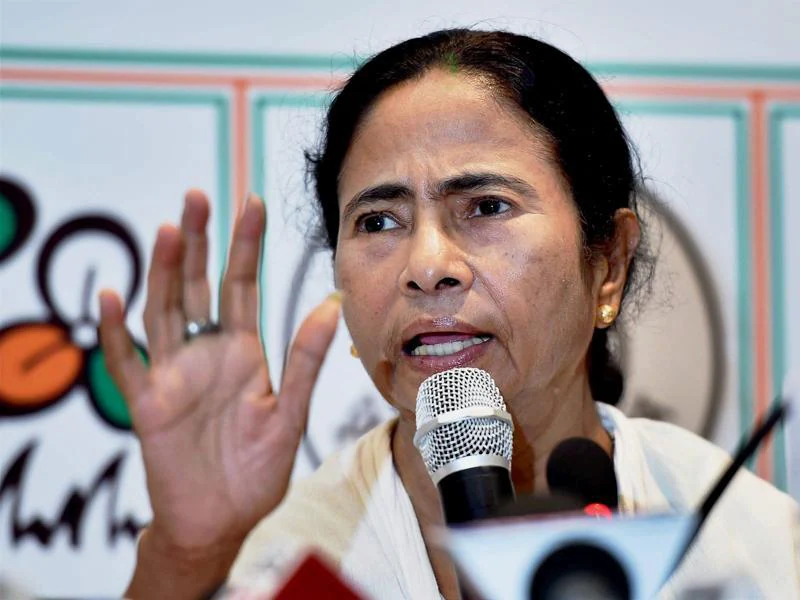Which investor would be crazy enough to set up shop in a place ruled by extortionists and political thugs ruling the streets? Amidst all this, the typical Bhadralok has gone on chanting about the superiority of Bengal.
India is peppered with myths and outright lies that become acceptable narrative. One such enduring myth is that the “Bhadralok” or the intellectual class of Bengal has always stood up against abuse
What hastens the terminal decline of Bengal is the inability of the Bhadralok to accept this reality. The longer they live in denial and the longer they parrot romantic myths about Kolkata being the safest city for women in India, the more terminal and irreversible will be the terminal decline of Bengal. No city in India is safe for women. No state in India has a police and judiciary that deliver justice in a timely manner to women who are victims of assault. But at least intellectuals in other states do not go around ululating days after a lady doctor is allegedly gang-raped and killed that Bengal and Kolkata are very safe for women. Or that there is something unique about the state and its citizens. It is good to be proud of one’s heritage, language, culture and art. But the elite of Bengal have a strange tendency to magnify it in an embarrassing manner. One example of this: a journalist was travelling with and interviewing the combative, articulate and controversial banker turned leader Mahua Moitra during the Lok Sabha campaign. Without batting an eyelid, the Member of Parliament told the journalist: “We Bengalis are a superior race.” The odd thing was the journalist, who too belongs to Bengal, happily accepted the sweeping generalisation and the derogatory intent towards other “Indian races”. To repeat, it is wonderful to be proud of your heritage culture, language and art that includes literature, theatre and cinema. But to revel in past glory when things are in a shambles around you reminds us a bit of the iconic Guru Dutt movie “Saheb, Bibi Aur Ghulam” that brilliantly portrayed the decay and degeneration of the erstwhile feudal aristocracy of Bengal.
Small things have the capacity to tell powerful and poignant tales of decline, decay and degeneration. Not far back, the sheer ability of Bengal to gift brilliant artists like Satyajit Ray was astounding. So was its ability to deliver reclusive stars and brilliant actors like Suchitra Sen, who became famous as the Greta Garbo of India for disappearing completely from public view after retiring from acting and cinemas. It is here that small things reveal decline. Suchitra Sen had a daughter, Moon Moon Sen, who too became an actress. But even “proud” Bengalis will admit that there was a vast gulf between the mother and daughter when it came to charisma and artistic excellence. Moon Moon Sen, in turn, had two daughters Riya and Raima Sen who also became actors. But to compare them with Suchitra Sen would be a travesty. The authors are by no means even suggesting that the daughter and granddaughters of Suchitra Sen are inferior in any way. They are successful and independent females who have made their life choices. Kudos to them. And yet, in a strangely poignant way, the journey from Suchitra Sen to Riya Sen reflects the journey of Bengal since Independence. The authors have no doubt West Bengal must still be brimming with talented actors, writers, musicians and directors. But somehow, one doesn’t see the likes of Hrishikesh Mukherjee, Basu Chatterjee, Uttam Kumar, Suchitra Sen, Sharmila Tagore, Mahasweta Devi anymore. About the likes of Aurobindo, Rabindranath Tagore and Subhas Bose being reincarnated in modern 21st century avatars, the less said the better.
The decline is visible not just in artistic aesthetics. The regression in economic terms is even more alarming and calamitous. Once upon a time, West Bengal was the most industrialised state in India and was ahead even of Maharashtra, Tamil Nadu and Gujarat. Today, it is an industrial wasteland. The last serious attempt at industrial investment in West Bengal was made in 2007 when the Tata group decided to set up a massive greenfield factory to manufacture the Nano car. So severe and so violent was the opposition to the project that the Tatas took the project to Gujarat. No serious attempt has been made since then to set up any large manufacturing facility in the state. Which investor would be crazy enough to set up shop in a place ruled by extortionists and political thugs ruling the streets? Amidst all this, the typical Bhadralok has gone on chanting about the superiority of Bengal. The average Bengali who is not an intellectual needs to feed his family. So now you will find Bengali migrant workers in every corner of India. At the beginning of the 21st century, the per capita income of West Bengal was three times that of Odisha, which competed with Bihar to be the poorest state in India. Right now, the per capita income of Odisha is significantly higher than that of West Bengal. The per capita GST collection of Odisha is between four to five times that of West Bengal.
The alleged gang rape and murder of the 31-year-old doctor now named “Abhaya” has been so horrifying that Indian cities are reliving the “Nirbhaya” moment. But the sad fact is that brutal gang rapes happen everywhere in India. And the police in every state often botches up; sometimes at the instructions of political masters. Abhaya alone doesn’t reveal the rot in West Bengal. The roots of the rot go far deeper. And the Bhadralok is complicit in this decimation of a proud heritage as thugs and goons have a free run.
Yashwant Deshmukh is Founder & Editor in Chief of CVoter Foundation and Sutanu Guru is Executive Director.

